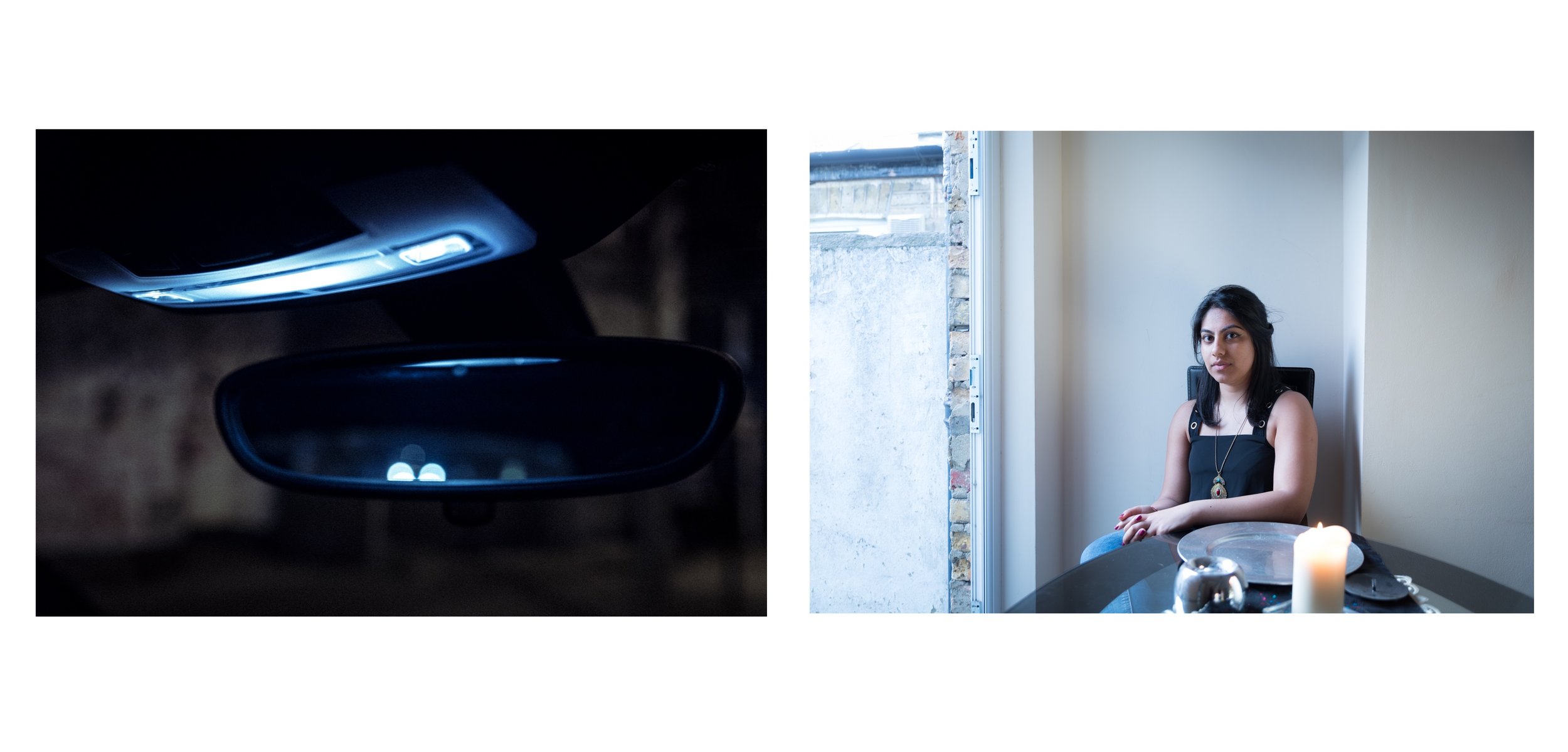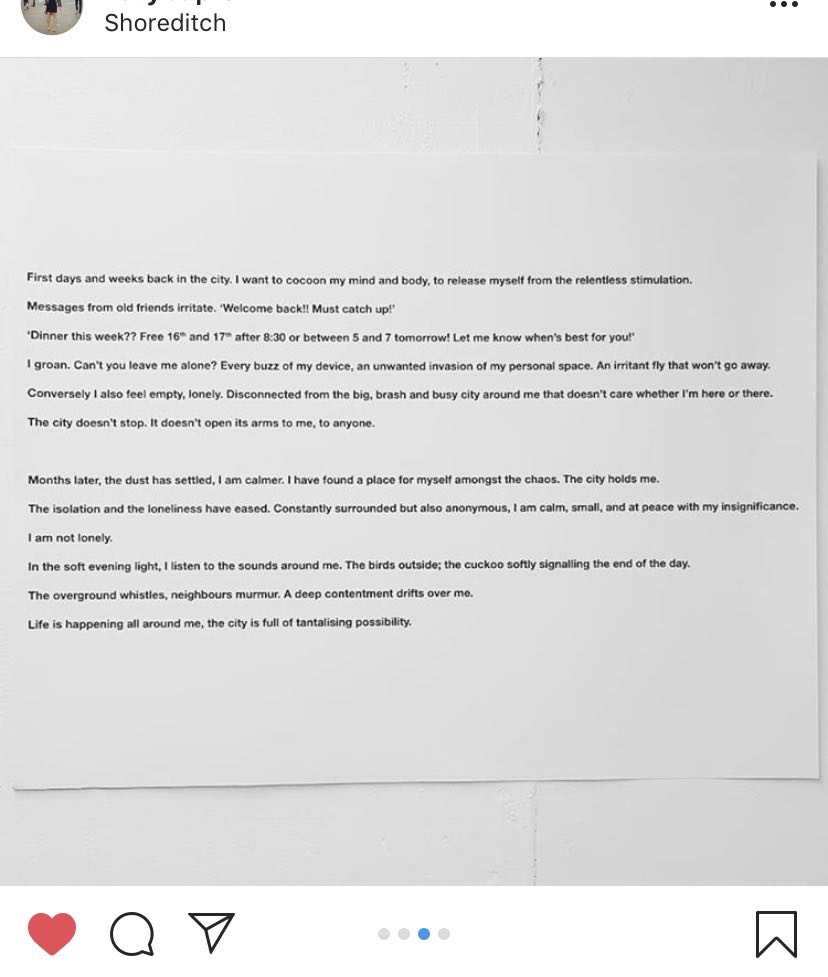As I reflect on nearing the end of the FMP, I’m obliged to consider what has and hasn’t worked in the way the work was presented on the website and at exhibition. The two key decisions about the presentation were
· grouping the images into triptychs
· presenting the images alongside text
I will endeavor to explain these decisions in this post.
Prior to starting this course I’d always thought of making photographs in terms of trying to create the single killer image, something as interesting and as beautiful as possible for its own sake. I’ve written in earlier modules about how repeated exposure to the work of professional practitioners on this course, and the opportunity to hear many of them discuss their work in interviews, gradually forced me to reconsider the importance of creating the single impactful image. It’s certainly easier to appreciate the value of a thoughtfully curated series of images when you feel the impact of the work either in a gallery or in quiet contemplation of a photobook. The potential for communication of a series of images is exponentially increased over what’s possible in a single frame. This understanding of the true importance of stringing images together arrived for me around the same time as I was trying to understand how to create visual narrative, for which analysis of Gregory Crewdson’s work was particularly helpful.
So, I was struggling with the idea of narrative and how to create this both within an image and within a series of pictures. At this stage I was still shooting empty urban scenes exclusively and was not able to create anything that I felt effectively communicated the project’s themes. Feedback was always along the lines that the pictures were nice enough, but that the underlying message was not discernible.
Big lightbulb moment came at this exhibition
Visiting the London Nights exhibition in May was a key moment, as I’d been wondering about how to solve the narrative question for quite a few months without feeling any closer to figuring it out and so was unsure how I’d be able to produce a successful Final Major Project. At London Nights I saw lots of inspiring work, but a series of images presented in triptych really stuck with me – the connections suggested between each photograph were close yet non-specific enough, that the viewer was able to make links of their own without feeling that the photographer was being too didactic.
Attempted diptych
At that stage I’d already experimented with a couple of diptychs, which I’d found unsatisfactory, but the third image seemed to bring balance and a plethora of additional narrative possibilities. The whole narrative thread opened out in front of my eyes and I resolved to try this with my own work. It was a ‘lightbulb moment’ in the journey of this project.
Attempt to create an image with some internal narrative
Once the penny had dropped, I tried creating semi-staged images, in a nod towards Crewdson, to see if I could create more visual intrigue in this way. Unsurprisingly, it did not work too well. The triptypchs didn’t work too well either initially and I felt this was mainly because they didn’t have an entry point – a way to invite the viewer into the story. I realised this would be best achieved by portraiture, using people to spark off the narrative, with the other two images inciting further questions. Images by artists such as Tom Hunter came to mind, whose portraits can on one hand seem almost mundane, but on the other hand are deeply suggestive and sometimes carry layers of additional meaning. I thus used work such as this as a role model to work towards.
Living In Hell by Tom Hunter, from his website
The key then was to make more portraits and as I was also convinced of the importance of including myself explicitly in the work, I accepted that self-portraits would be required too. I felt a responsibility to match the degree of exposure that my collaborators had offered to the project, and that the work would not be complete without an attempt at honest self-examination of my own state in relation to the issues under discussion.
Making more portraits confirmed that introducing people into the work was the key to bringing the triptychs together. The stories that each portrait suggested based on my own personal knowledge of the subject, or on elements that were suggested from the image itself or from discussions during the shoot, guided further shoots to create images that worked with the portraits or that allowed links to be made with other images made during the project.
I had also explored the use of text earlier in the project and subsequently abandoned the idea as I felt that I’d somehow lost my way in telling the story I wanted to tell. One of our tutors had also commented to the effect that I’d lost my own voice in trying to seek the views of a large number of other people and I’d taken this to heart as it was a very perceptive observation. I continued to collect writing from collaborators though and to interview the people I was shooting. I was also writing poetry inspired by the project theme and in response to some creative writing that one of my collaborators had written.
Page example from Hackney By Night by David George
Once the triptychs started to take shape and I felt more confident that they’d be able to suggest a story, the potential interaction of words with these images was again interesting to me. Works like Hackney By Night by David George and London Ends by Philipp Ebeling, where text either accompanied the images in a standard ‘image facing text’ (Hackney By Night) kind of way, or in a more whimsical thread running through the book (London Ends) also proved that this might be an effective way to present the work.
Page example from London Ends by Philipp Ebeling
In each of the above two examples, I was particularly interested in the fact that the text did not necessarily appear to relate directly to the image(s) it appeared with in the presentation. This seemed to offer another opportunity to introduce interpretative uncertainty for the viewer, keeping them a little off balance when trying to understand the work and seek for answers within the triptych. I definitely didn’t want to end up with captions, but with text that further opened out the potential interpretations of the pictures, with the aim to offer as broadly applicable a perspective of the issue as possible, such that the viewer is more likely to be able to connect with some aspect of the work.
The writing in Hackney By Night is a great example of writing that expands the mood of the images without seeking to directly explain them. Again, as I was aiming for an emotionality in the work, I very much wanted to use any device that could increase the emotional temperature of the work and support the mood I was trying to create for the viewer.
The way the text was finally used to accompany the work differed on the website and the exhibition. On the website, each triptych is accompanied by text and can be considered as a self-contained ‘packet’ of narrative information. At the exhibition, I chose not to accompany each triptych with text directly, preferring rather to position text in the space in a way that gave the text more independent emphasis and allowed the viewer to reflect on the writing and then move towards another grouping of images in a more flexible way.
Exhibition visitor reading text
It was interesting to see then, that exhibition visitors seemed to respond in equal measure to the text as well as the photographs. There were a number of people who took pictures of the writing and posted to social media for example, demonstrating that they’d received the text on an equal footing to the images rather than as a narrative sidekick. This response again confirmed the benefit of staging an exhibition, as providing an alternative way to present the work and allowing it to be received and interpreted differently.
Exhibition visitor posted text on Instagram following the private view
Another element that I experimented with during the exhibition was of combining triptychs to create larger narratives. These groups of six photographs came about when planning the exhibition layout on my computer and realising that grids of images gave the work a different feel again. Having two portraits in each group suggested potential relationships between people that were not seen in a single triptych. This was quite fun to play with and the typical response from visitors to the exhibition was of trying to make connections when confronted with the six images, which kept them engaged for longer and forced them to reflect more deeply on what they were seeing. These 6-image grids were the most talked about element of the exhibition without doubt, and the aspect that provoked the most questions from visitors.
6 image grid on show at the FMP exhibition
It was really satisfying to get direct feedback on the mode of presentation, when the viewer was finding a single or multiple implied stories, but was not able to satisfactorily resolve them immediately and was thus provoked to ask a question about the work. Having viewers arrive at widely varying interpretations of the same set of images was even better!
Overall then, I believe that the decisions to present the work in triptych and alongside text were both successful at this stage of the project. It is possible that as the work continues and the range of responses to the issue increases, these decisions may no longer serve the best communication of the themes and I would be happy to concede them as they are by no means non-negotiable. As stated previously, I feel that there’s still a long way to go with this project and the work will no doubt change course again before reaching its natural conclusion. As I look ahead, I anticipate the addition of video to the work as well as a wider variety of scenes and portraits but there will almost certainly be other unexpected developments and I look forward to steering a course into the future.













